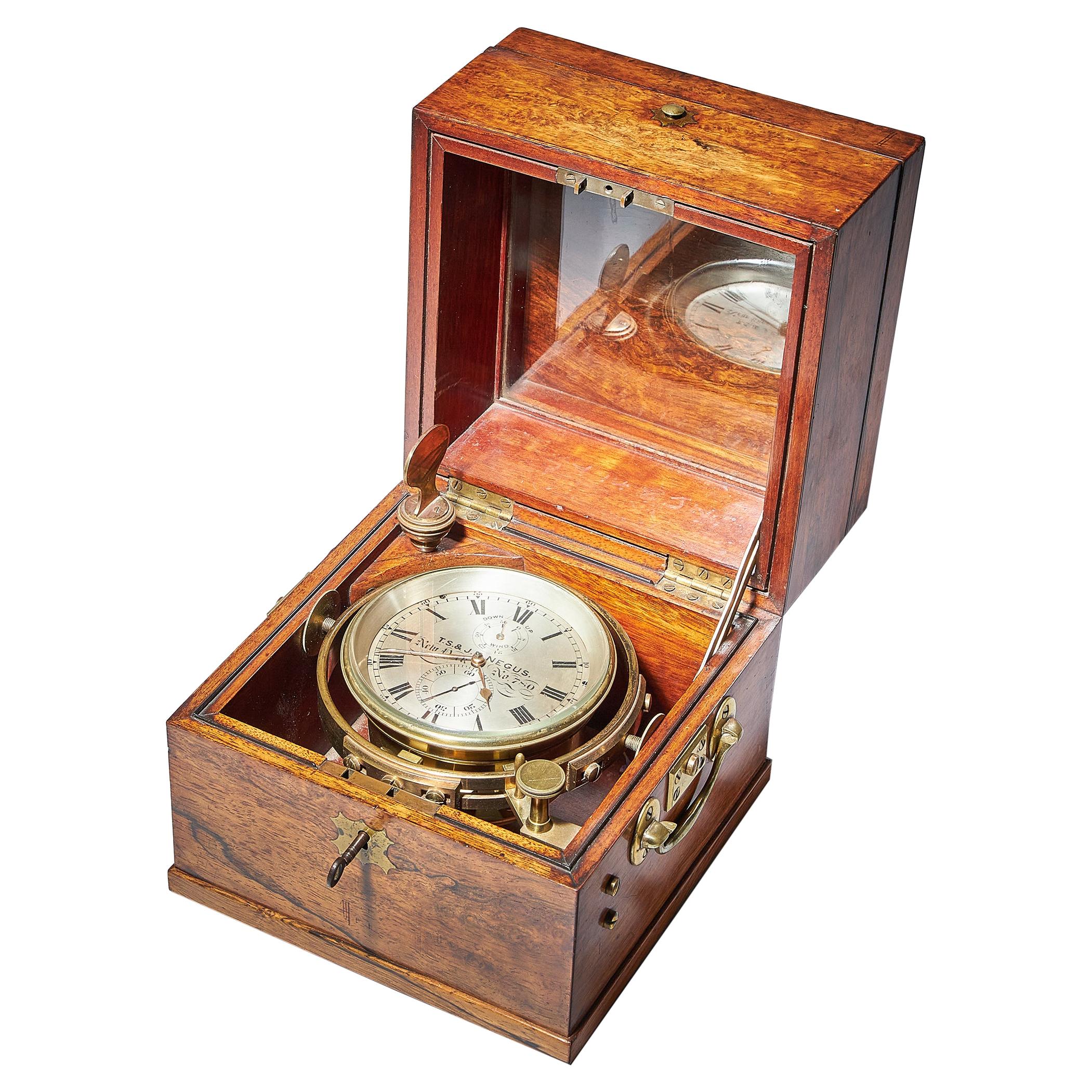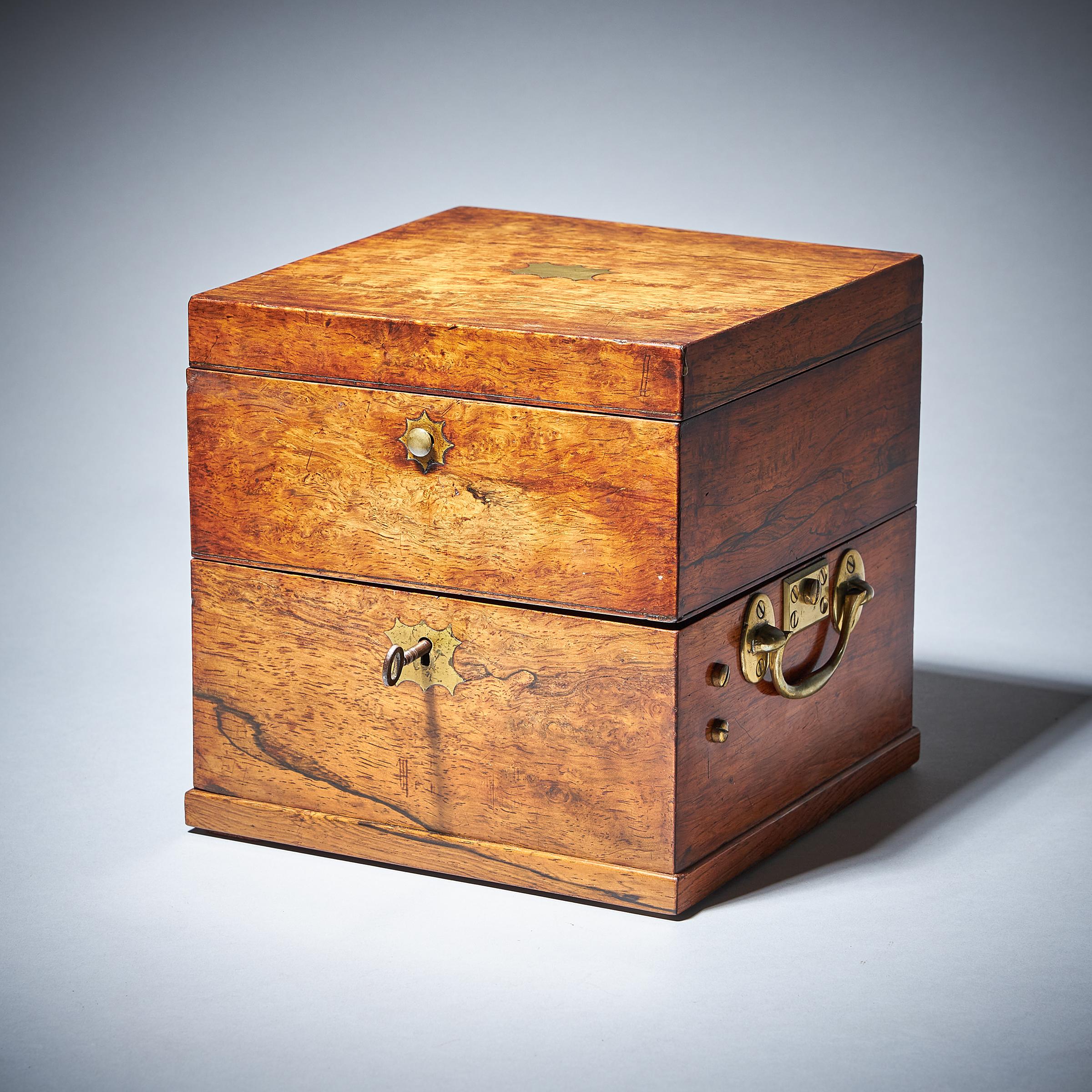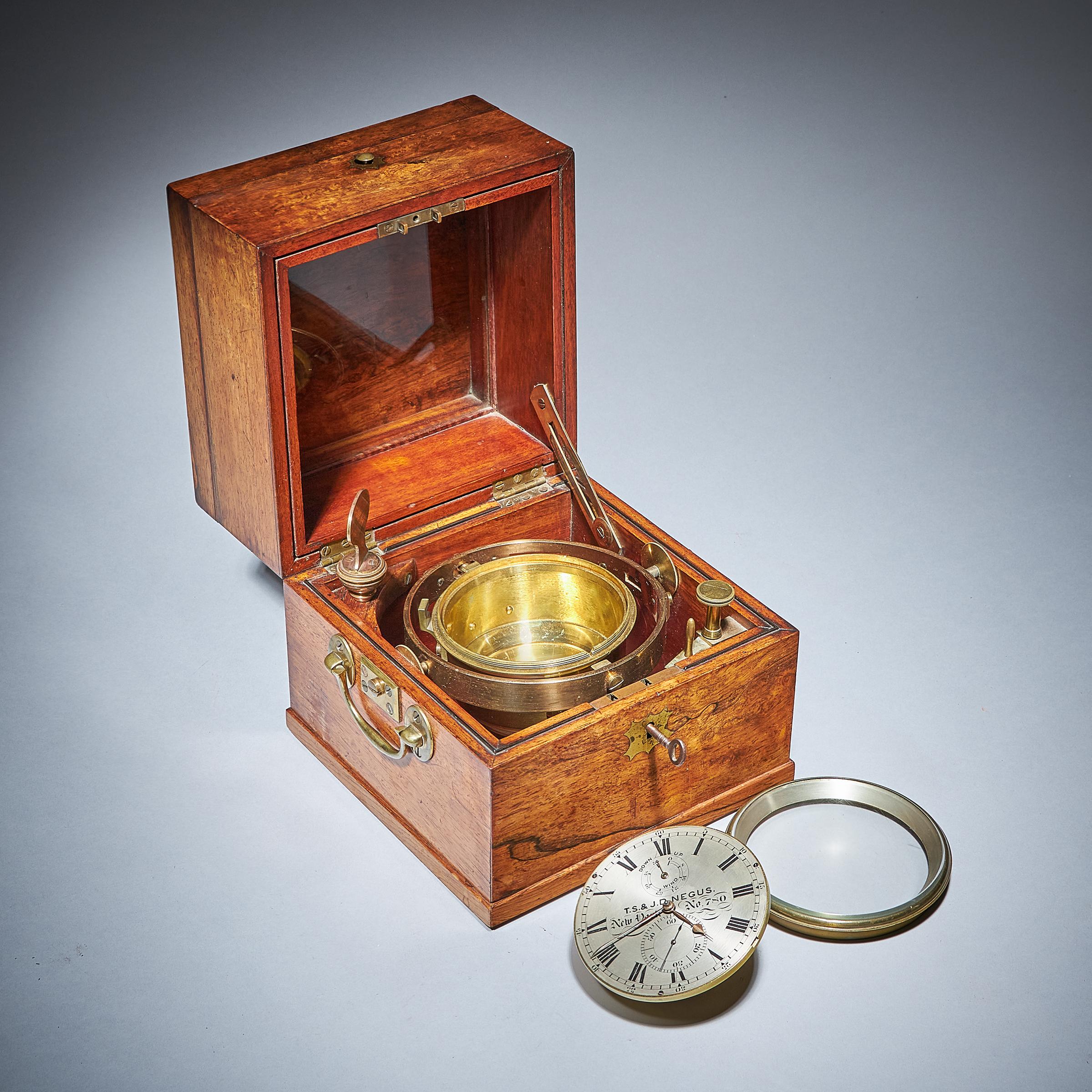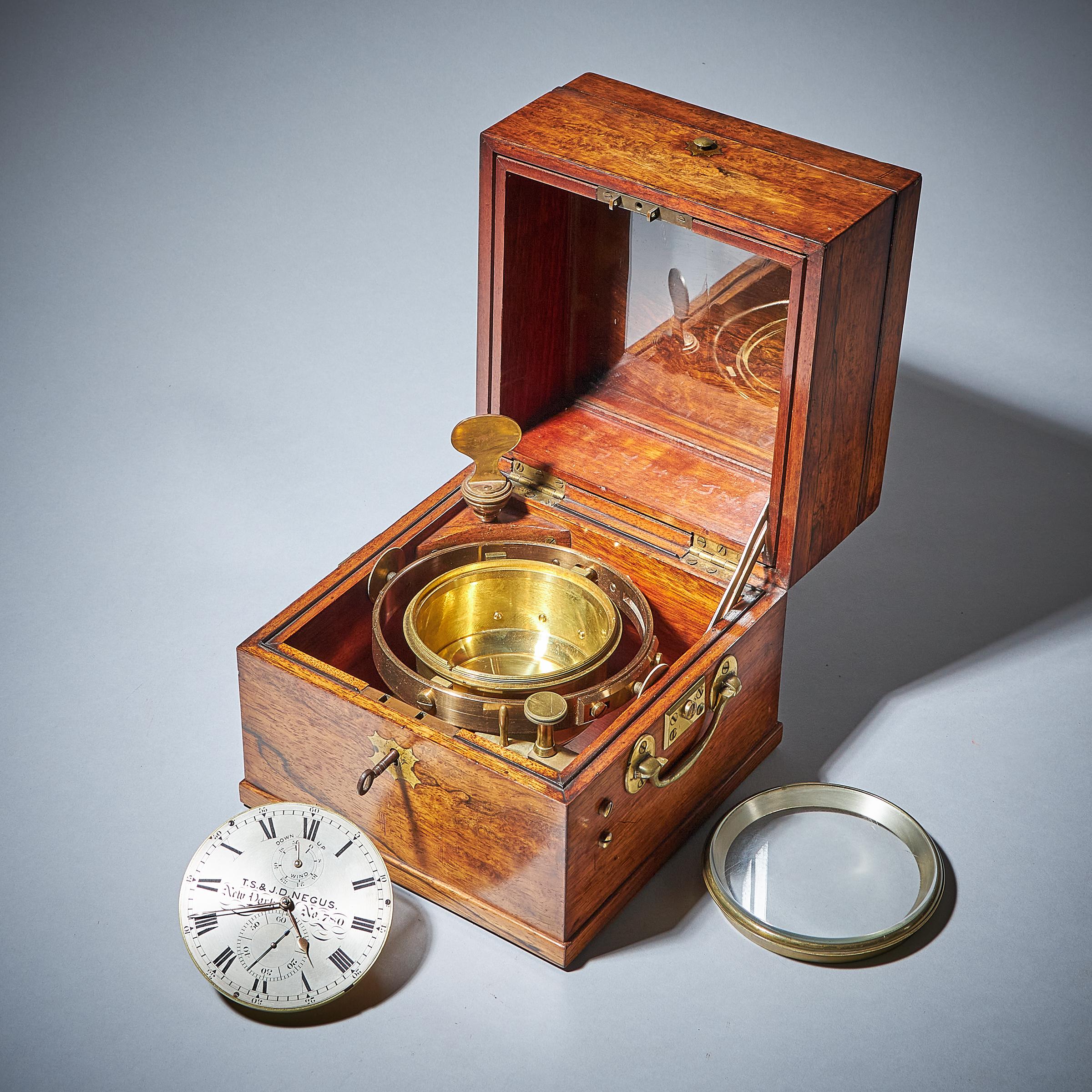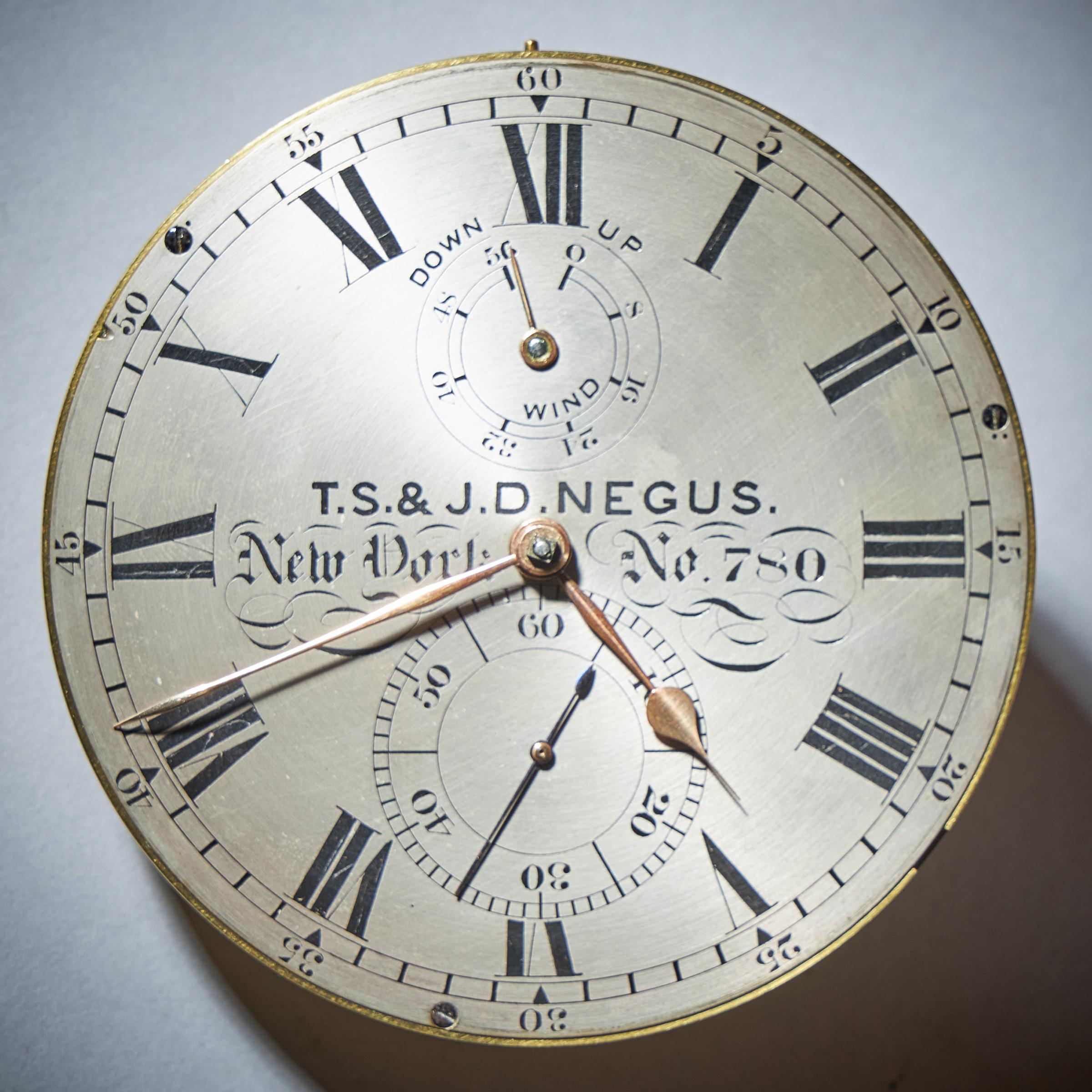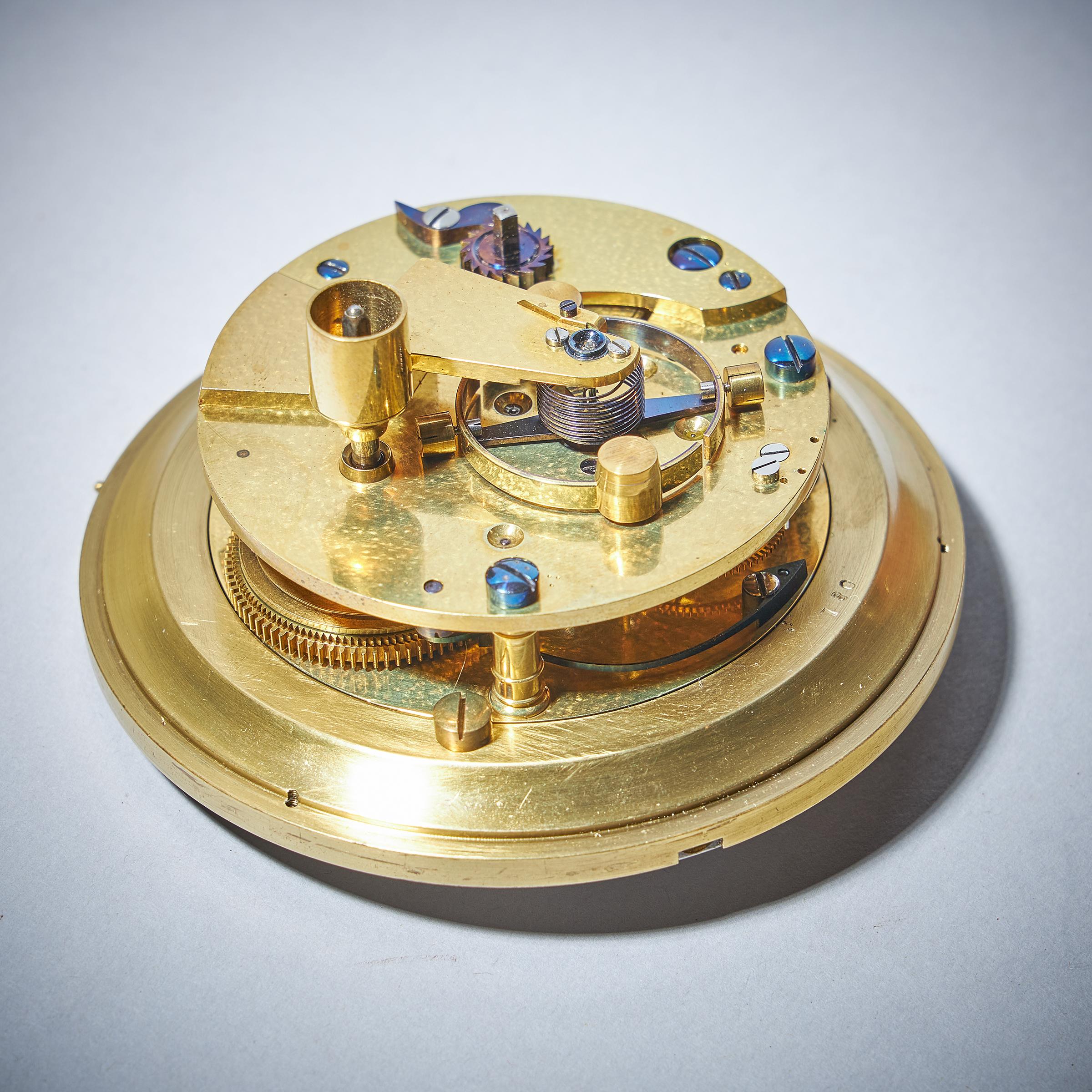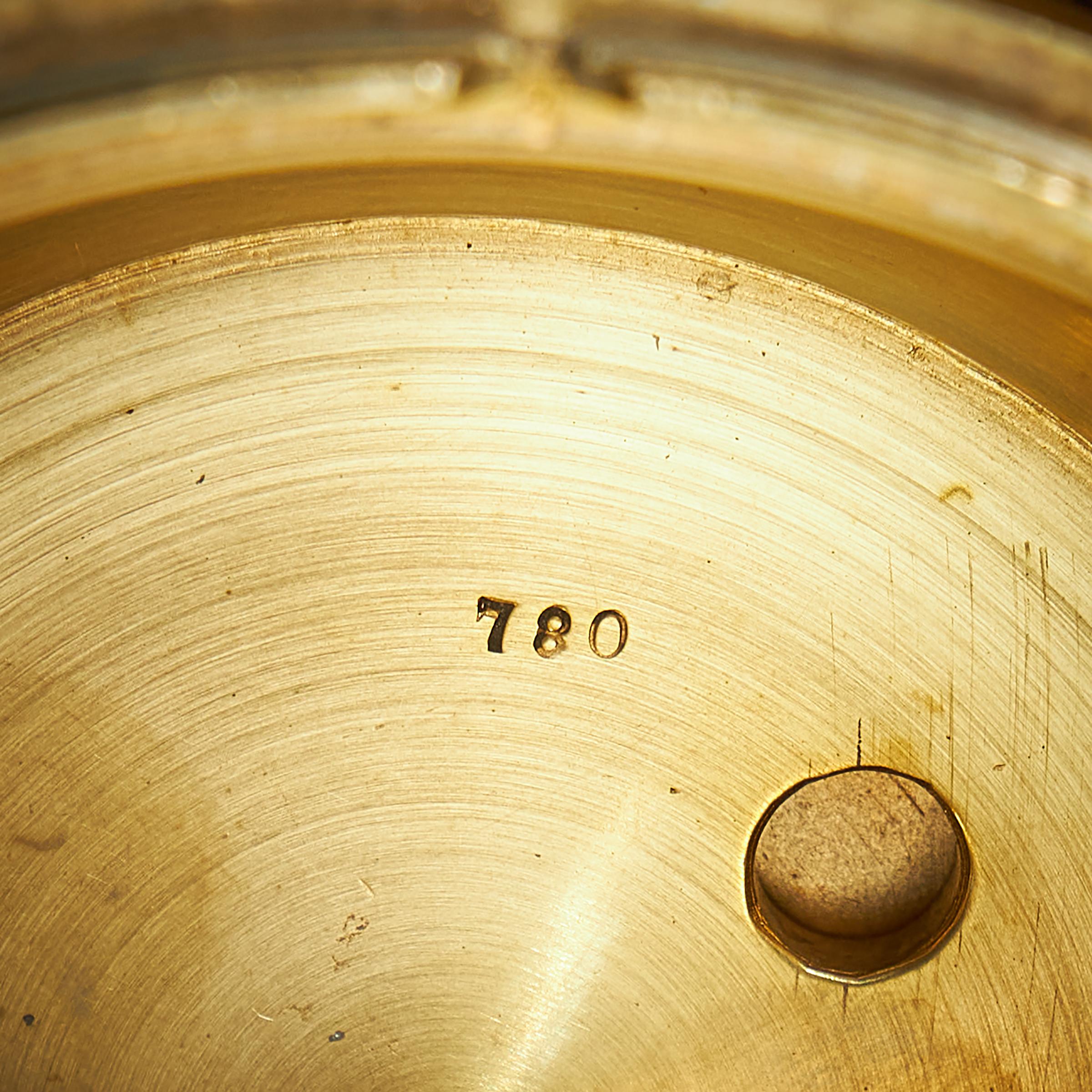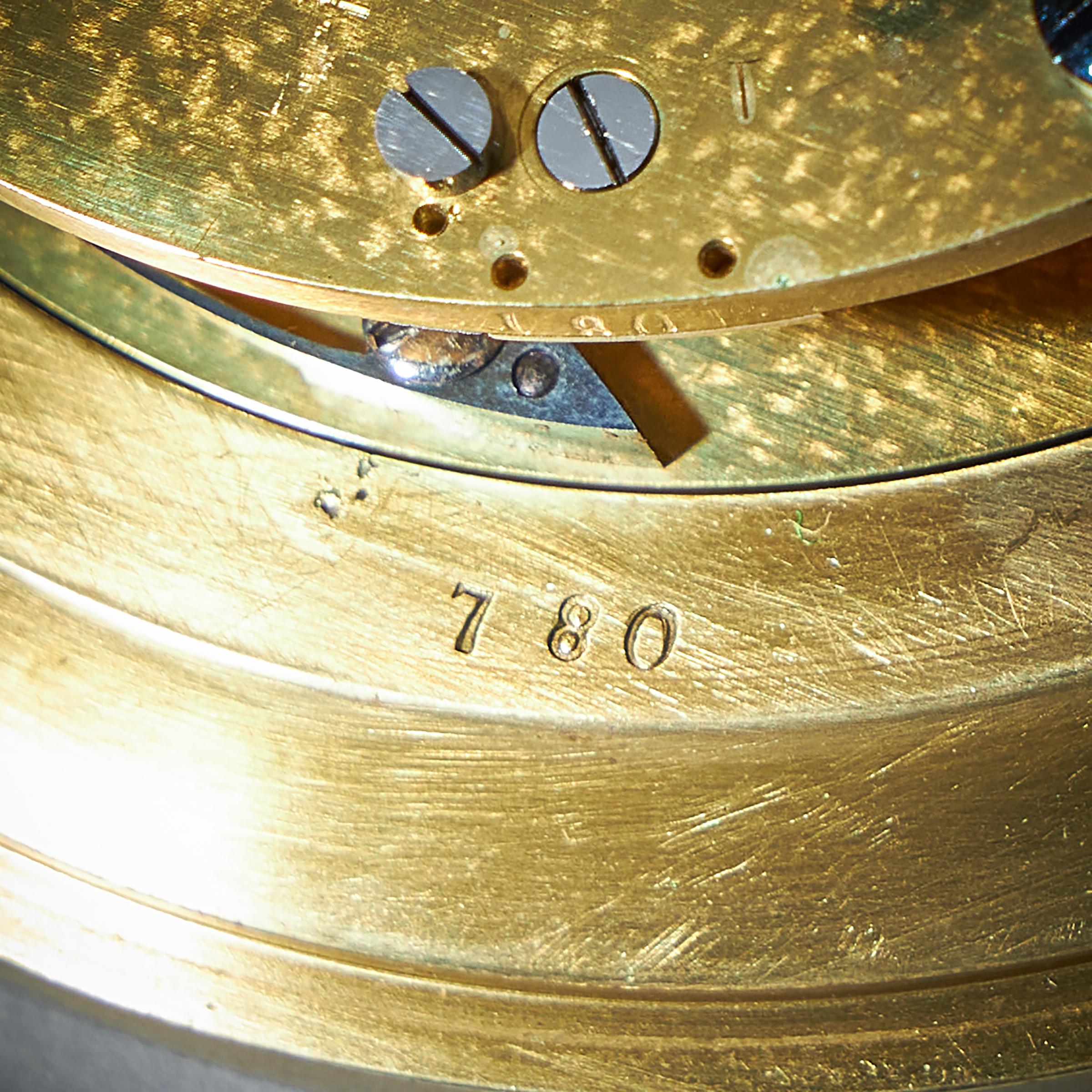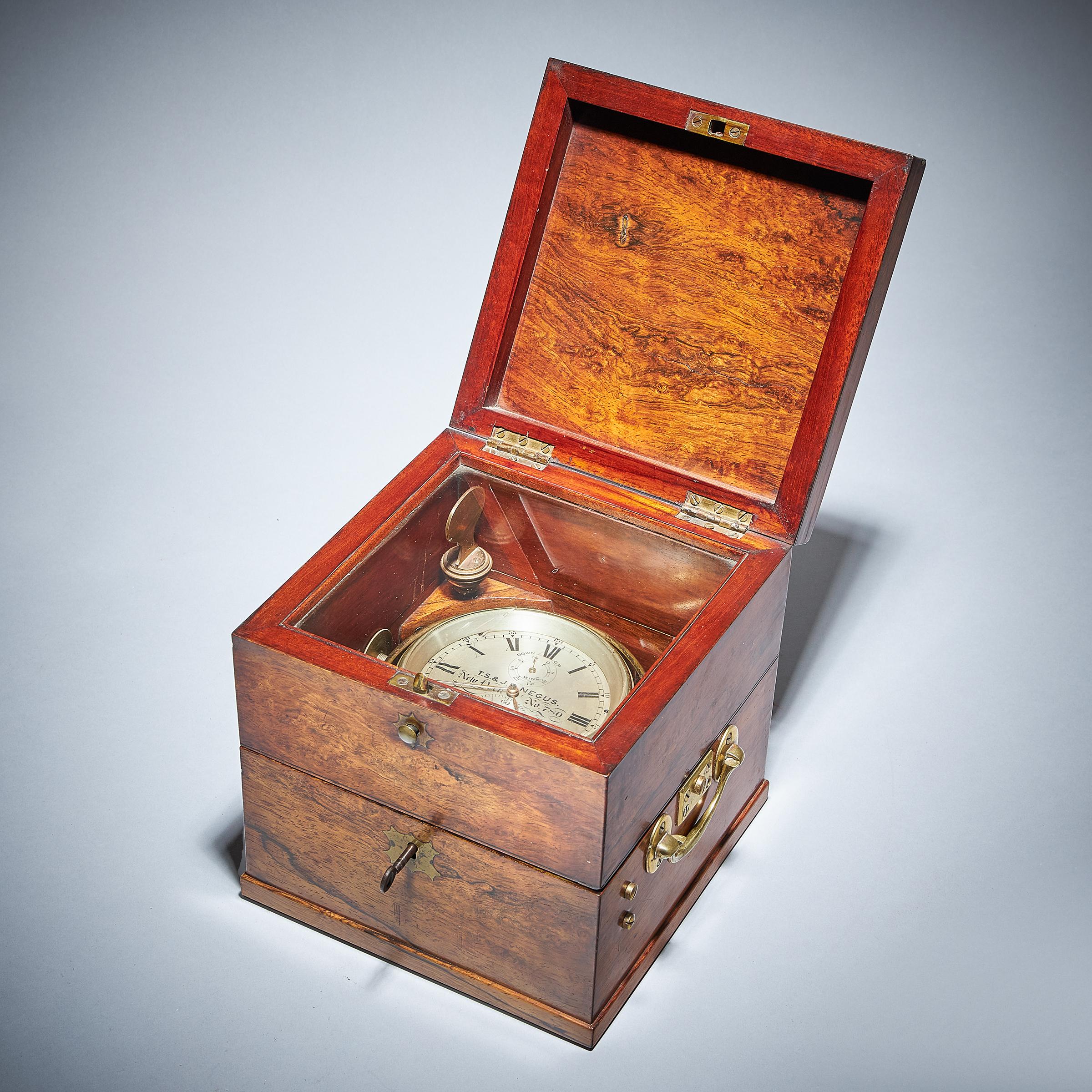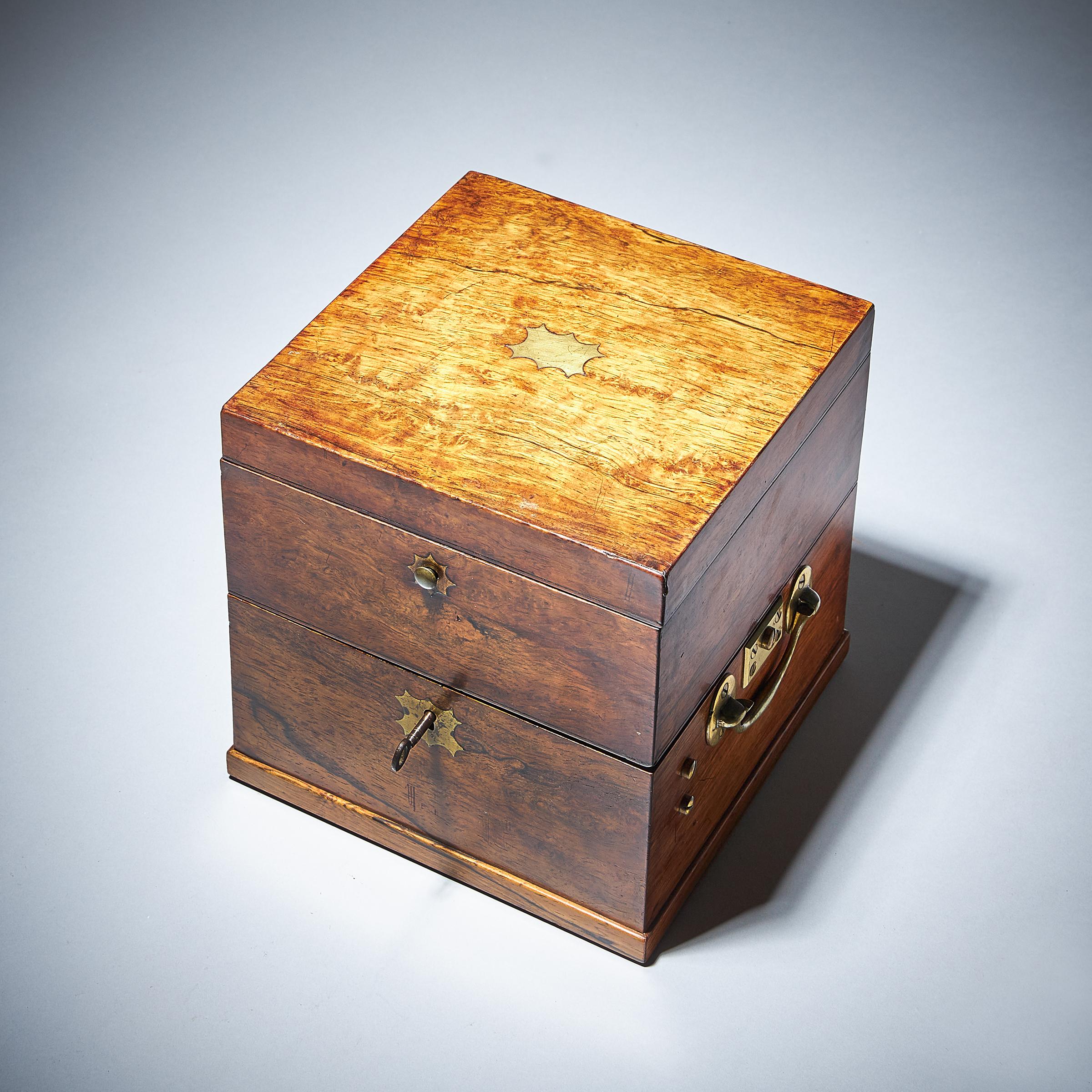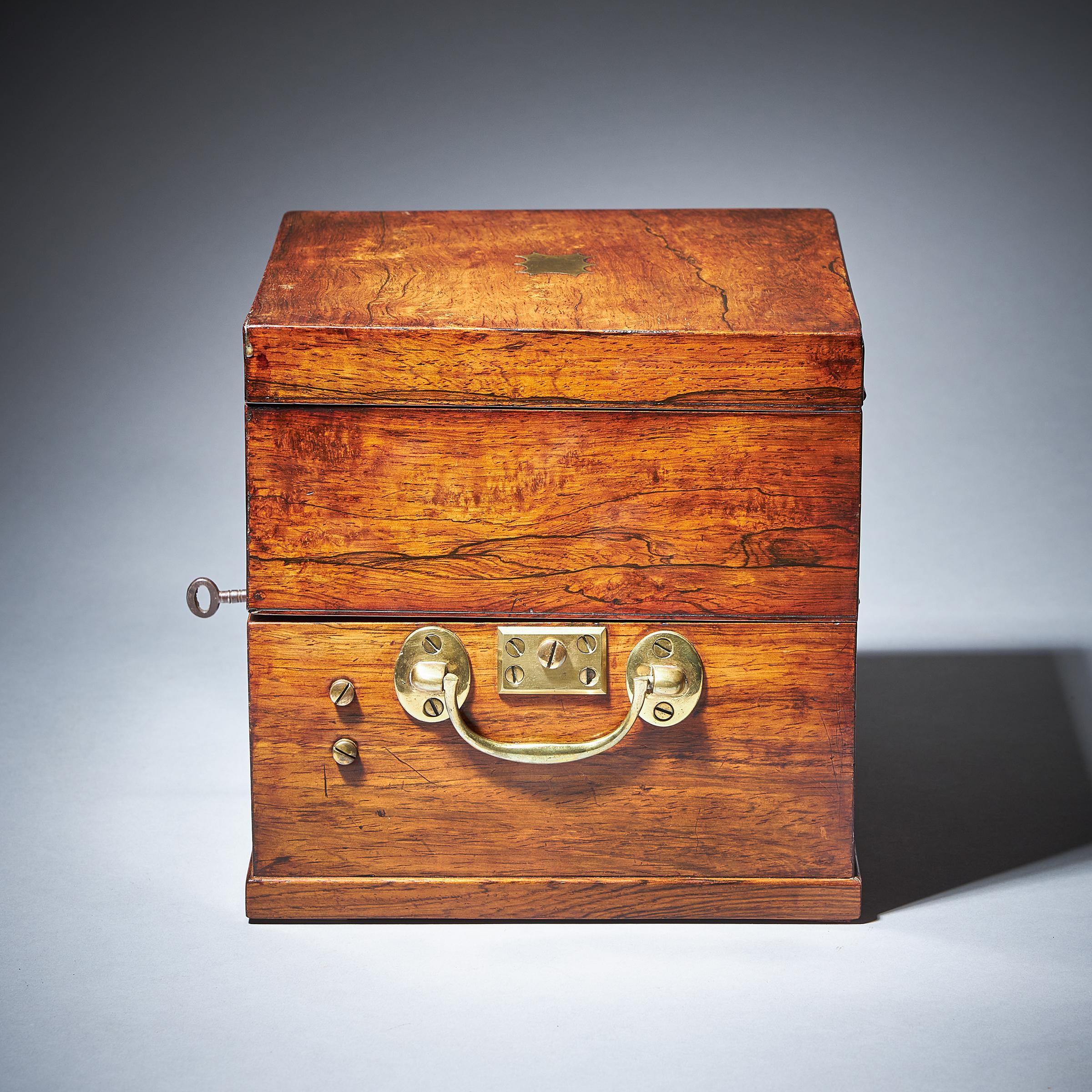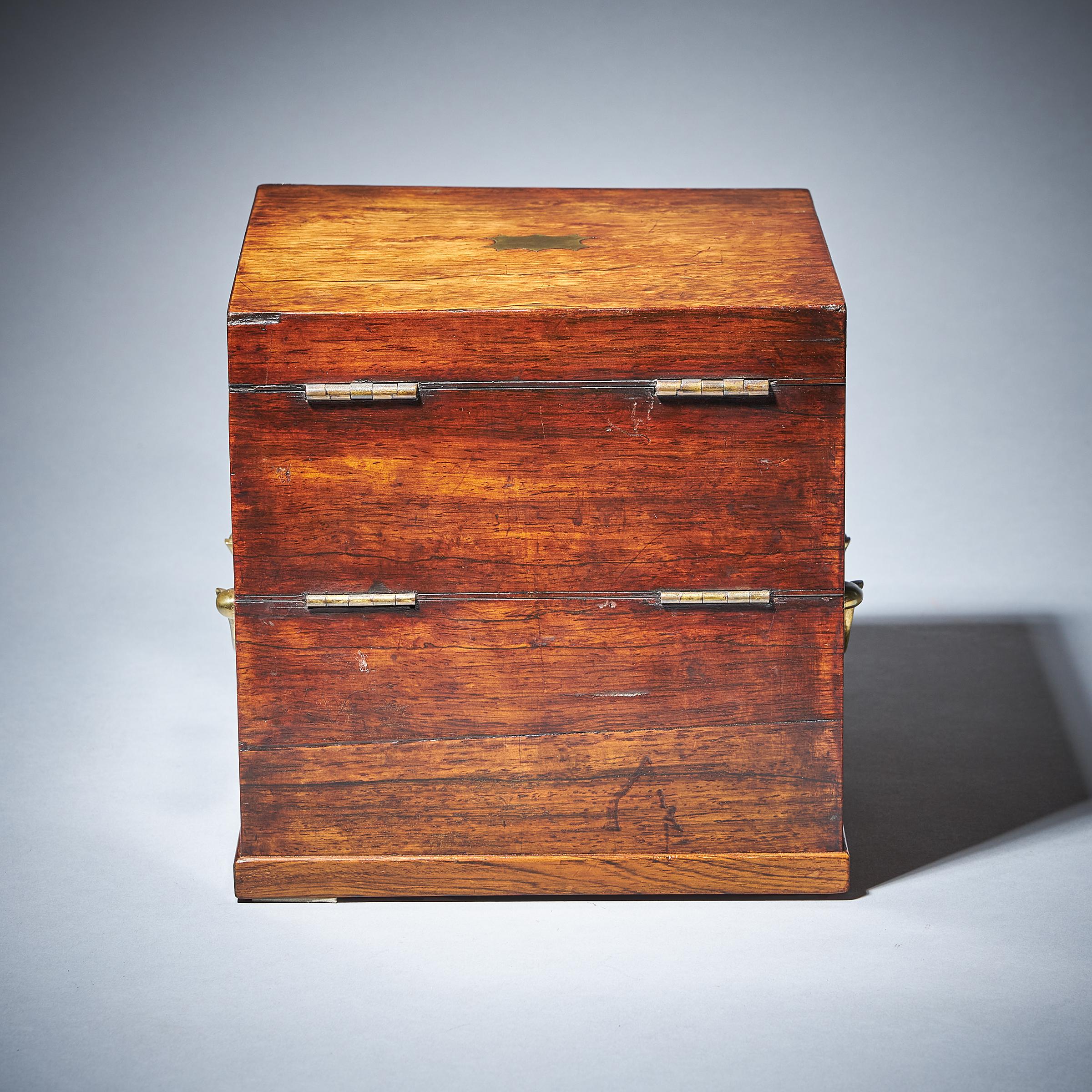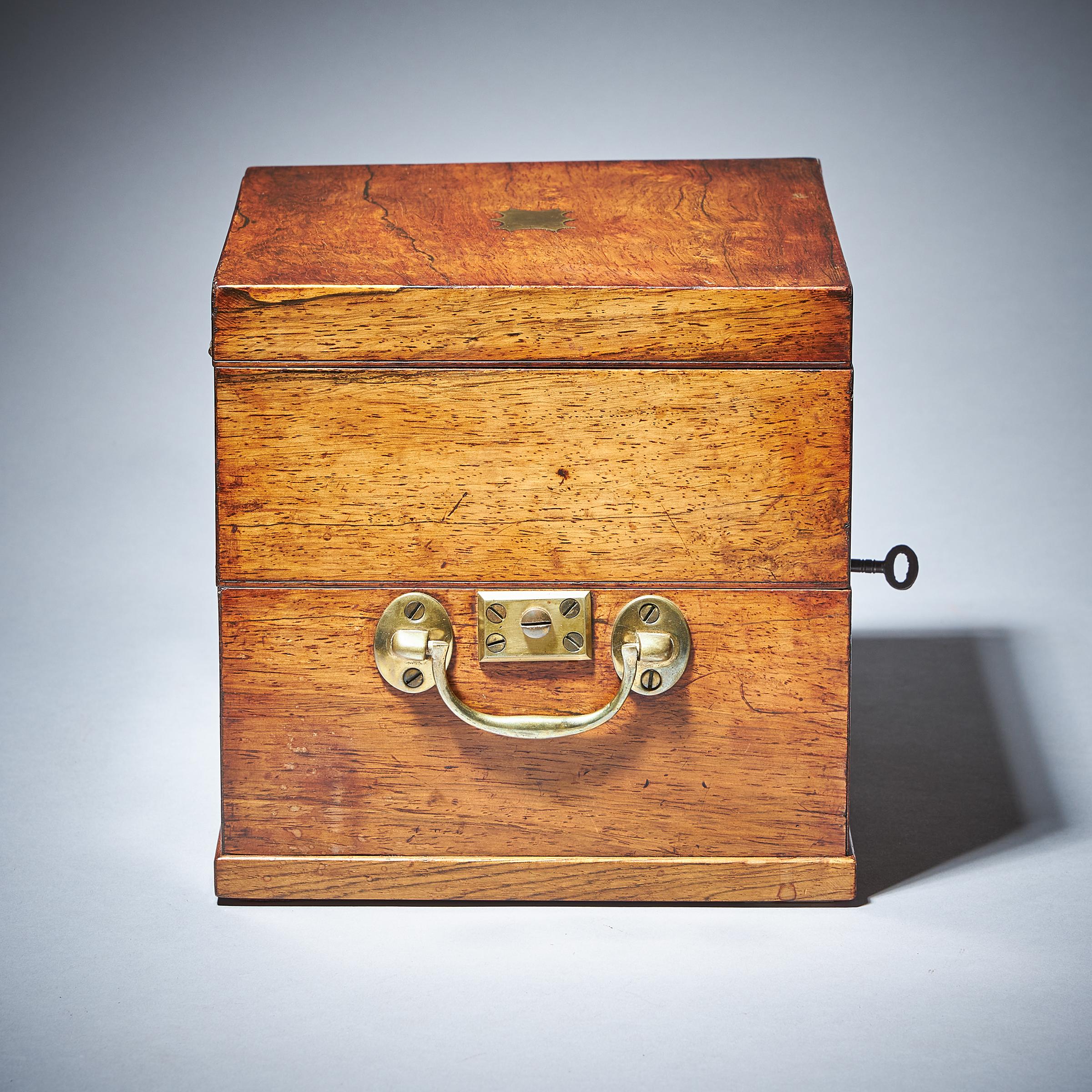Fine American Two Day Marine Chronometer, Signed T. S & J. D Negus New York
Sold
Request Information
Follow Us
Fine American Two Day Marine Chronometer, Signed T. S & J. D Negus New York
A Classic beautifully produced mid-19th century American chronometer in a three-tier rosewood case, made c. 1850-60. The typically constructed case consists of a lower and glazed upper part, as well as an observation lid. The lower part has two drop handles to the sides, while the front has a lock and key with an inlaid brass escutcheon. In the front of the upper part, there is a brass button to lock the observation lid. The movement is situated in a gimballed brass bowl, which can be secured for transport purposes by a turnable handle in the bottom right corner of the case. The 4” silvered dial is protected by a flat bevelled glass set in a bezel, screwed to the bowl.
The makers have signed and numbered the chronometer on the silvered dial in the following manner:
T. S & J. D NEGUS
NEW YORK No. 780
The time is indicated by a fine pair of gilt brass hands on the silvered dial with a Roman chaptering, Arabic five-minute and minute divisions
The seconds are indicated by a blued-steel hand on a separate chapter ring below the middle with Arabic ten-second, five-second and second divisions. Below the XII is an up-and-down dial 0 – 56 (hours).
The two-day duration movement is constructed between two circular plates and is driven by a spring in a spring barrel via a chain fusee. It has a so-called Earnshaw spring detent escapement with a compensated balance and helical spring. The chronometer is wound by a special key with a ratchet to prevent winding the clock in the wrong direction. The key can be stored in a hole in the left top corner of the case. The winding hole is covered by a sprung shutter.
The makers:
T.S. and J.D. Negus were British immigrants. In 1848 Thomas Steward Negus and his brother John Davidson Negus founded the firm of T.S. & J.D. Negus, which manufactured and sold maritime chronometers and nautical instruments at 140 Water Street, New York City near the East River. The firm made chronometers for the United States Navy as well as shipmasters and yachtsmen. Their instruments were among the best manufactured in the country. The firm traded as T. S. Negus & Co. in 1864 and as T.S. & J.D. Negus in 1869. The firm was described as “probably the most prolific American chronometer manufacturer” up through the first quarter of the 20th century. From 1886 to 1887, in competitive trials of chronometers at the United States Naval Observatory, located in Washington, D. C., their chronometers passed first place in a list of 45 chronometers submitted for testing. Sea captains came to the shop to purchase and have their chronometers tested, rated and certified.
Thomas’s brother, John D. Negus, died on September 26, 1890. John’s son, John S. Negus continued in the firm under the T.S. & J.D. Negus name until his death on July 14, 1944. His son, John C. Negus, from Brooklyn, continued with the firm as senior partner until his death on December 15, 1961. His son, John S. Negus II, ran the family business until his death in 1963. On March 8, 1964, the New York Daily News announced that John C. Negus II bequeathed to the museum of the City of New York a 19th-century ship’s binnacle that the Negus firm made.
Condition
Good. Wear consistent with age and use. Fantastic condition throughout, in perfect order.
Dimensions
Height: 7.09 in. (18 cm)
Diameter: 7.09 in. (18 cm)
Literature
Tony Mercer, chronometer makers of the world, p. 195
Jonathan Betts, marine chronometers at Greenwich, Oxford, 2017.
PREVIOUSLY SOLD
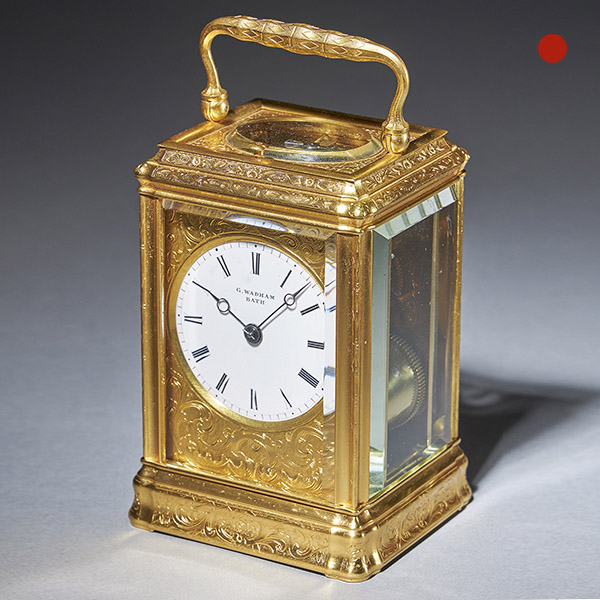
19th Century Gilt-Brass Engraved Striking and Repeating Carriage Clock
19th Century Gilt-Brass Engraved Striking and Repeating Carriage Clock Sold Follow Us19th Century Gilt-Brass Engraved Striking and Repeating Carriage Clock The superb engraved gilt brass gorge case has facetted glass panels to all sides so...
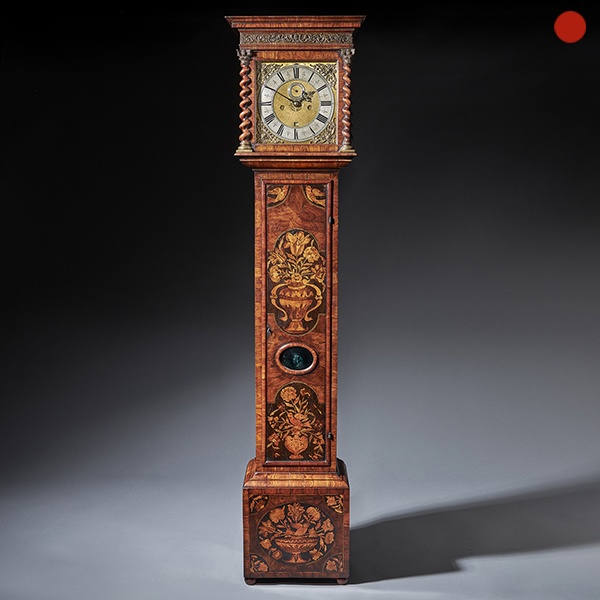
Important Charles II 17th Century Princes Wood and Marquetry Longcase Clock
Important Charles II 17th Century Princes Wood and Marquetry Longcase Clock SOLD Follow UsImportant Charles II 17th Century Princes Wood and Marquetry Longcase Clock A unique and important Charles II 17th century month-going Princes wood and...
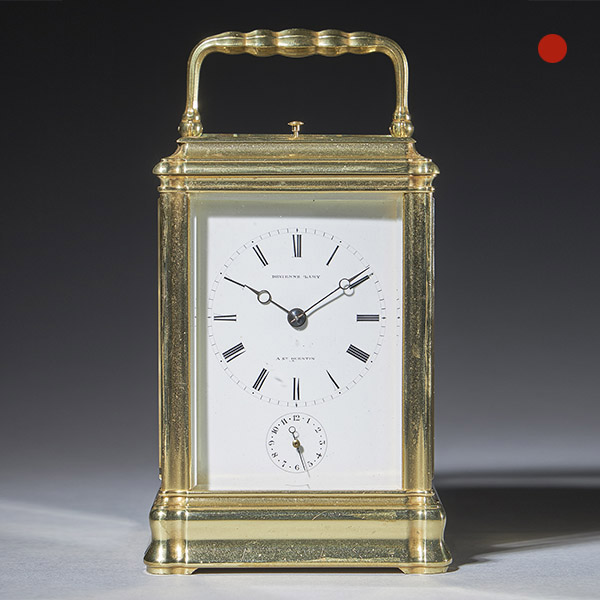
A Rare And Unusual 19th-Century Carriage Clock Signed Devienne Lamy A St Quentin, Circa: 1860
A Rare And Unusual 19th-Century Carriage Clock Signed Devienne Lamy A St Quentin, circa 1860. The gorge case has bevelled glass panels on all sides.
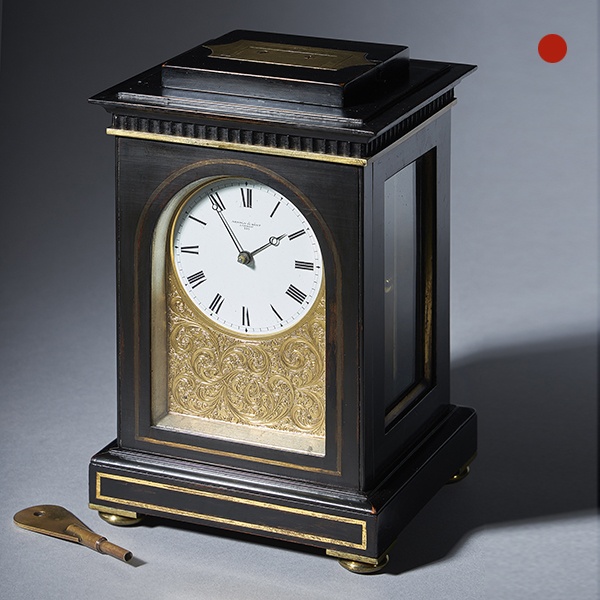
A Unique And Fine Mid 19th-Century Travelling Clock By Celebrated Makers Arnold & Dent, London
Unique and Fine Mid 19th-Century Travelling Clock By Celebrated Makers Arnold & Dent, London. The time is indicated by a fine pair of blued-steel Breguet hands.
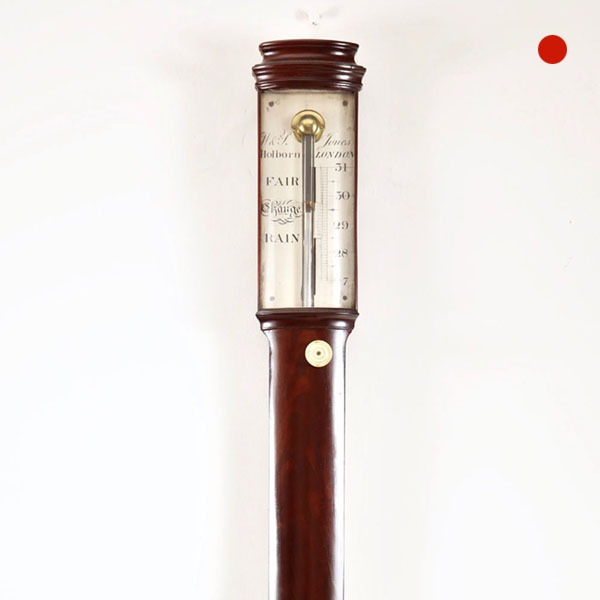
A fine 18th-Century George III mahogany bow-front stick barometer
The mahogany-veneered case has an austere form with only the moulded caddy top and the urn-shaped cistern cover to break its soberness. The silvered register plates are protected by a bowed glass, the recorder with vernier scale being operated by a knob below the register plate.
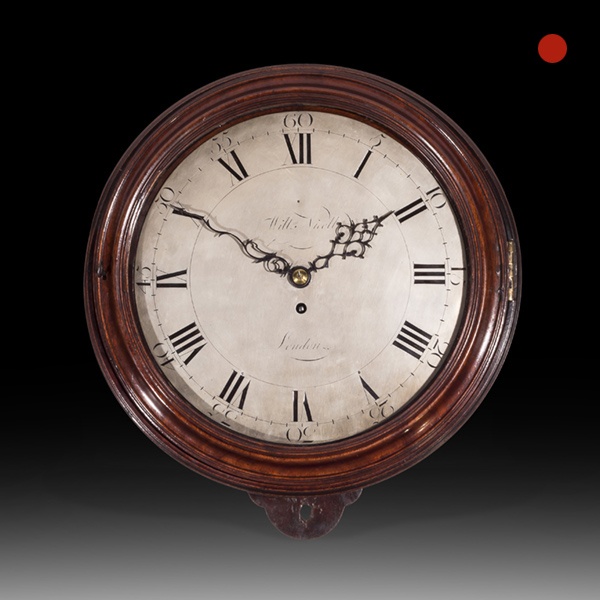
Large Mahogany 18th-Century Dial Clock, William Nicoll, London
The solid mahogany case has a moulded mahogany glazed door, which can be locked on the left-hand side. The original rectangular saltbox is permanently attached to the front and has doors to the side and the bottom.

19th Century Gilt-Brass Engraved Striking and Repeating Carriage Clock
19th Century Gilt-Brass Engraved Striking and Repeating Carriage Clock Sold Follow Us19th Century Gilt-Brass Engraved Striking and Repeating Carriage Clock The superb engraved gilt brass gorge case has facetted glass panels to all sides so...

Important Charles II 17th Century Princes Wood and Marquetry Longcase Clock
Important Charles II 17th Century Princes Wood and Marquetry Longcase Clock SOLD Follow UsImportant Charles II 17th Century Princes Wood and Marquetry Longcase Clock A unique and important Charles II 17th century month-going Princes wood and...

A Rare And Unusual 19th-Century Carriage Clock Signed Devienne Lamy A St Quentin, Circa: 1860
A Rare And Unusual 19th-Century Carriage Clock Signed Devienne Lamy A St Quentin, circa 1860. The gorge case has bevelled glass panels on all sides.

A Unique And Fine Mid 19th-Century Travelling Clock By Celebrated Makers Arnold & Dent, London
Unique and Fine Mid 19th-Century Travelling Clock By Celebrated Makers Arnold & Dent, London. The time is indicated by a fine pair of blued-steel Breguet hands.

A fine 18th-Century George III mahogany bow-front stick barometer
The mahogany-veneered case has an austere form with only the moulded caddy top and the urn-shaped cistern cover to break its soberness. The silvered register plates are protected by a bowed glass, the recorder with vernier scale being operated by a knob below the register plate.

Large Mahogany 18th-Century Dial Clock, William Nicoll, London
The solid mahogany case has a moulded mahogany glazed door, which can be locked on the left-hand side. The original rectangular saltbox is permanently attached to the front and has doors to the side and the bottom.
YOU MAY ALSO LIKE
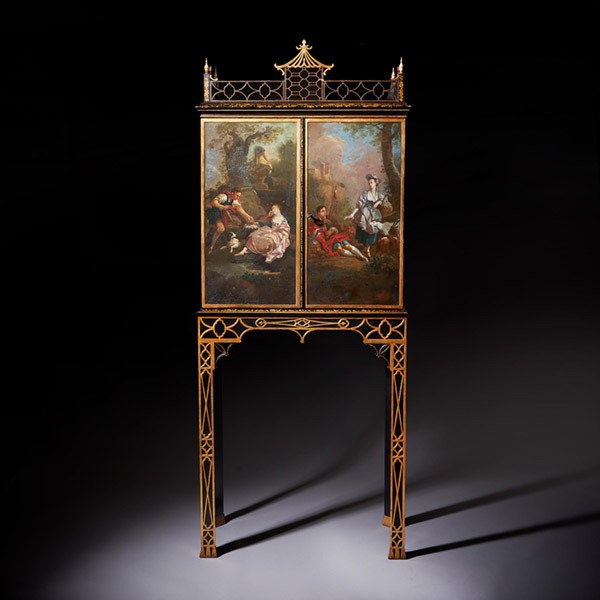
A Rare Chinese Chippendale George III cabinet on stand, circa 1760 England
A Rare Chinese Chippendale George III cabinet on stand, circa 1760. England £38,000Follow UsA Rare...
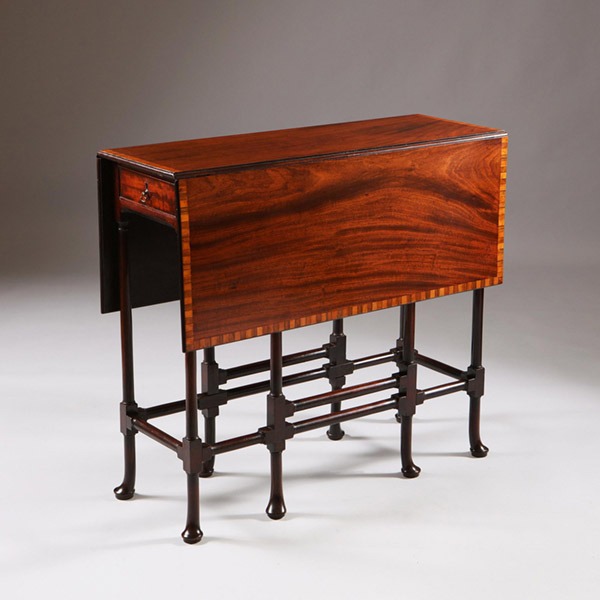
George III mahogany spider-leg table attributed to Thomas Chippendale 1768
A George III mahogany spider-leg table attributed to Thomas Chippendale 1768 £12,000Follow UsA...
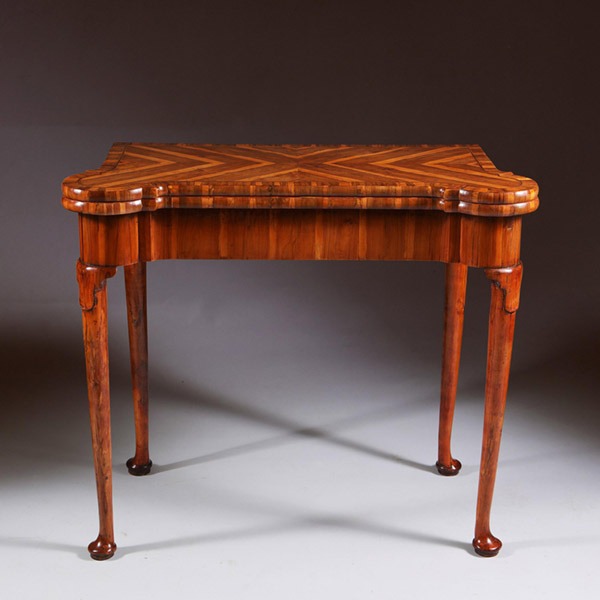
Museum Grade George I Cocus Wood Card Table, Circa 1725, England
Museum Grade George I Cocus Wood Card Table, Circa 1725. England £32,000Follow UsMuseum Grade...
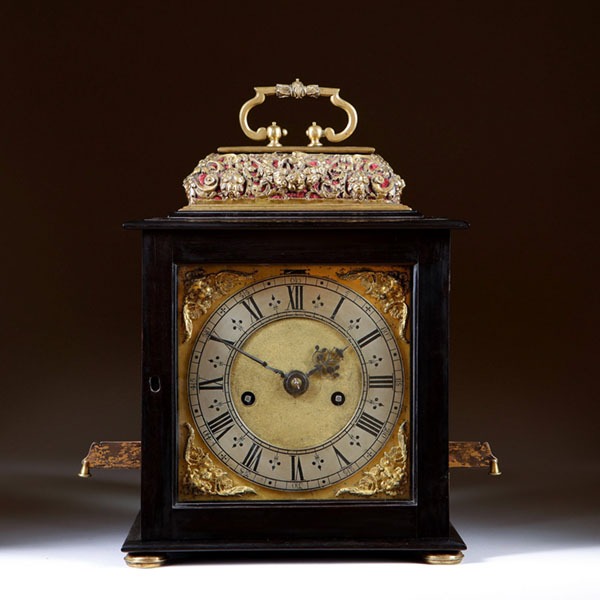
A Rare and Important Charles II 17th Century Table Clock by Henry Jones
A Rare and Important Charles II 17th Century Table Clock by Henry Jones £85,000Follow UsA Rare and...
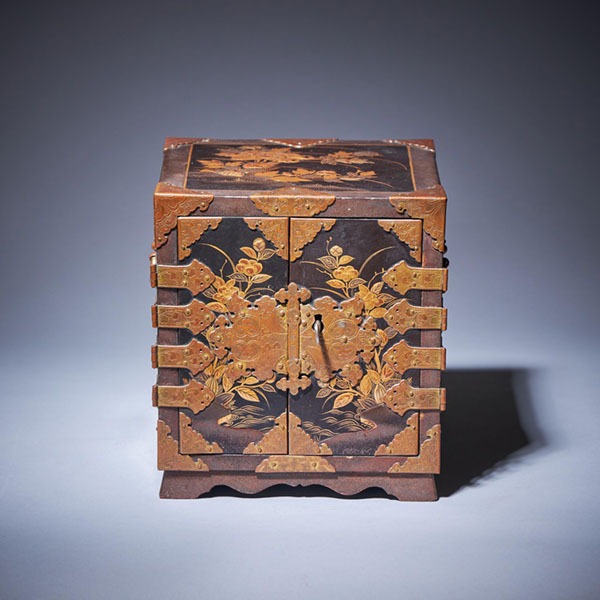
Important Early Edo Period 17th Century Miniature Japanese Lacquer Cabinet
Important Early Edo Period 17th Century Miniature Japanese Lacquer Cabinet £36,000Follow...
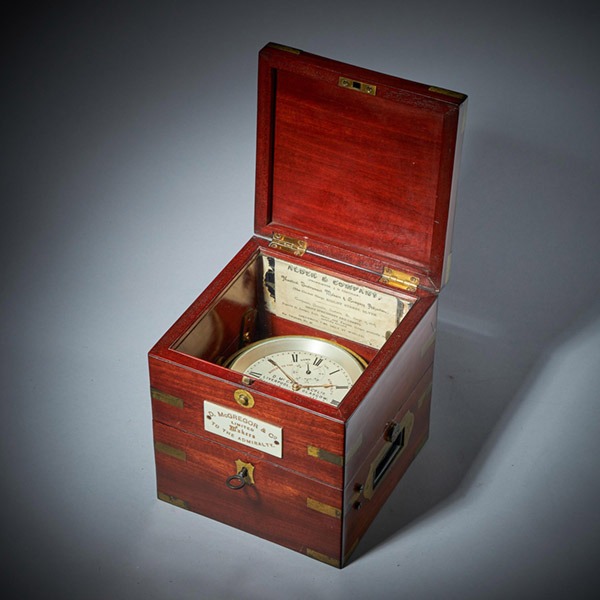
Fine Scottish Two-Day Marine Chronometer Signed and Numbered D. McGregor
Fine Scottish Two-Day Marine Chronometer Signed and Numbered D. McGregor £6,500Follow UsFine...

A Rare Chinese Chippendale George III cabinet on stand, circa 1760 England
A Rare Chinese Chippendale George III cabinet on stand, circa 1760. England £38,000Follow UsA Rare...

George III mahogany spider-leg table attributed to Thomas Chippendale 1768
A George III mahogany spider-leg table attributed to Thomas Chippendale 1768 £12,000Follow UsA...

Museum Grade George I Cocus Wood Card Table, Circa 1725, England
Museum Grade George I Cocus Wood Card Table, Circa 1725. England £32,000Follow UsMuseum Grade...

A Rare and Important Charles II 17th Century Table Clock by Henry Jones
A Rare and Important Charles II 17th Century Table Clock by Henry Jones £85,000Follow UsA Rare and...

Important Early Edo Period 17th Century Miniature Japanese Lacquer Cabinet
Important Early Edo Period 17th Century Miniature Japanese Lacquer Cabinet £36,000Follow...

Fine Scottish Two-Day Marine Chronometer Signed and Numbered D. McGregor
Fine Scottish Two-Day Marine Chronometer Signed and Numbered D. McGregor £6,500Follow UsFine...



